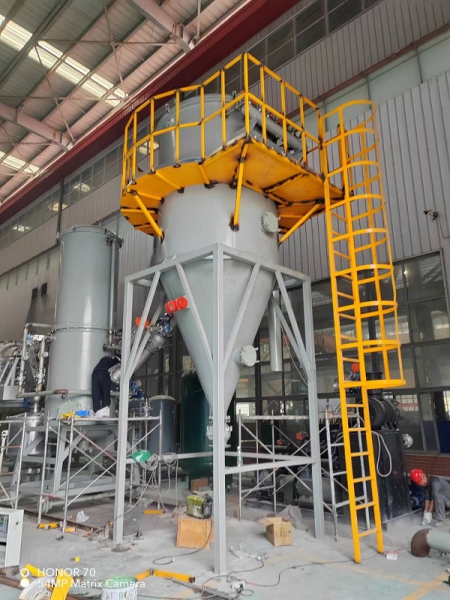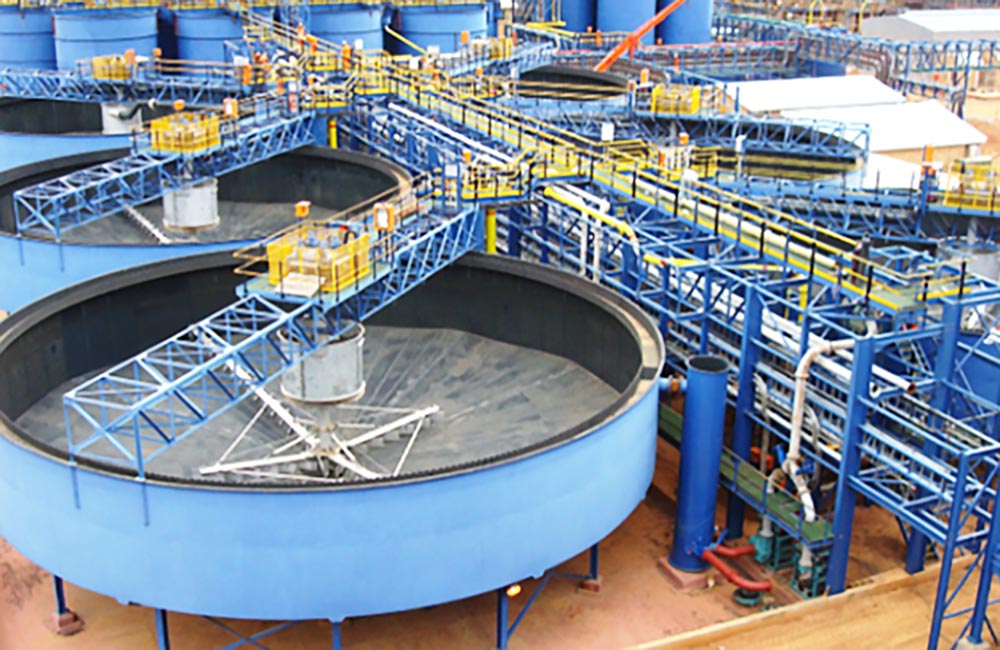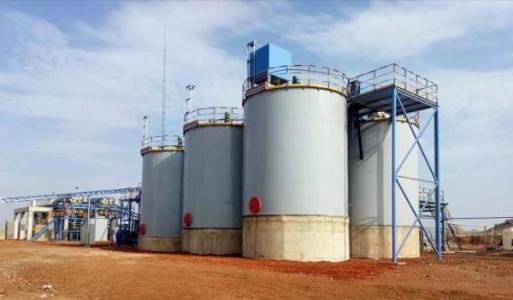
Company:Chengdu Cobalt Mining Co., Ltd
Email: sales@hot-mining.com
Phone:+86 28 83311885
Fax:+86 10 58646590
Address:Room10811, Floor8, Building A, Galaxy SOHO, Dongcheng Dist, Beijing, P.R.China
Gold CIP Production Line
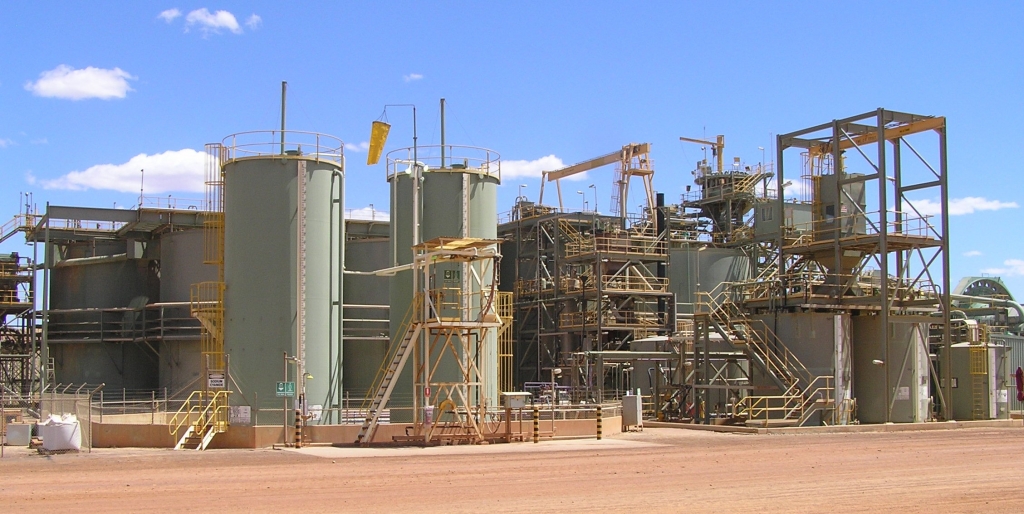
Process Introduction
CIP (Carbon in pulp) process is a high efficient method to leaching and recovering gold from gold ore, The most different from CIL process is in CIP process, gold leaching and adsorption are separated, first leaching, and then adsorption. Now it is being replacing by CIL process progressively. But it still have a lot of application.
Application
CIP process is suitable for the treatment of oxidized gold ore with low sulfur content and mud content. It is unsuitable for the gold ore with high grade silver as well. Generally, the proportion of gold and silver should not exceed 1:5. The best conditions for CIP process in China: PH=10-12, sodium cyanide concentration is not less than 0.015%, the particle size of activated carbon is 1.0-3.35mm, the best choice of carbon is coconut shell activated carbon, and the slurry concentration is 40-45%.
CIP Plant Consists of Following Steps:
1. Crushing and Screening
After the crushing and screening by the crusher and vibrating screen, the bulk ore (up to 650 mm) can be broken to small size (about 10 mm or even smaller).
Usually, small or medium scale mineral processing plants can meet the requirements after two stages of crushing and one stage of screening. However, large scale mineral processing plants need three or even four stages of crushing to get qualified products.
2. Grinding and Classification
After grinding and classification, the ore material can meet the requirements of leaching (85~95% through 200 mesh).
In the classical process, the grate ball mill and the spiral classifier constitute the first stage grinding and classification unit, and the overflow ball mill and the hydro-cyclone constitute the second stage grinding and grading unit.
If the ore contains some particle gold, the gravity separation process should also be set in the first stage of grinding and grading unit.
3. Thickening
The overflow slurry of classification is only 18-25%, if directly leaching will result in excessive energy cost and reagent consumption. Therefore, thickening is a necessary step. In order to accelerate the settlement, a certain amount of flocculants will be added to enhance the thickening effect.
The overflow will flow to recycle water system, and the underflow will be pumped to the leaching tank.
4. Leaching
After the slurry went into the leaching tank, the solution of sodium cyanide is added into the first leaching tank accurately. Every stage of tank has a certain height difference, which can let the slurry flow automatically to the next tank.
5. Adsorption
After leaching, gold is transformed from solid to free state, so a medium to enrich and recover it is necessary, activated carbon is the best choice due to its own micro-porous structure.
Activated carbon is put into the the slurry at the last adsorption tank, and it is flowed reversely through the air lifter. Carbon segregation screen is set in every absorption tank's outlet to separate the carbon and slurry. After screening and washing, the gold-loaded activated carbon will be sent to the desorption operation. After absorption, the gold grade in the tailing solution will reduce to 0.01-0.03g/m³.
6. Desorption of Gold-loaded Carbon and Electro-deposition
Gold-loaded carbon and slurry are lifted by carbon pump or air-lifter to separation sieve (the most popular sieve is liner vibrating sieve). Gold-loaded carbon and slurry are separated by water on the sieve surface, and then gold-loaded carbon is sent to carbon storage tank and the slurry and water flow into the first absorption tank.
There are several desorption methods. In China, the general application methods are Zadra desorption method, high temperature and high pressure desorption method (hereinafter referred to as HTHP method) and integral pressure desorption method (hereinafter referred to as IP method).
Through this step, it gets gold mud, and the gold grade can be as high as 20-50%.
4. Process Flow
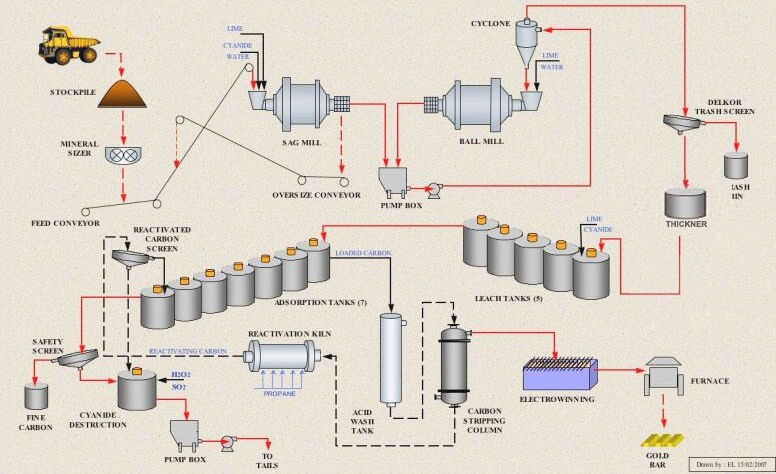
Contact us:
|
|
Serena Fu |
Kira Zhang |
Teresa Zheng |
|
|
serena.fu@hot-mining.com |
kira.zhang@hot-mining.com |
teresa.zheng@hot-mining.com |
|
Skype |
Serena20140924 |
kira.zhangjing |
teresa.zheng1213 |


